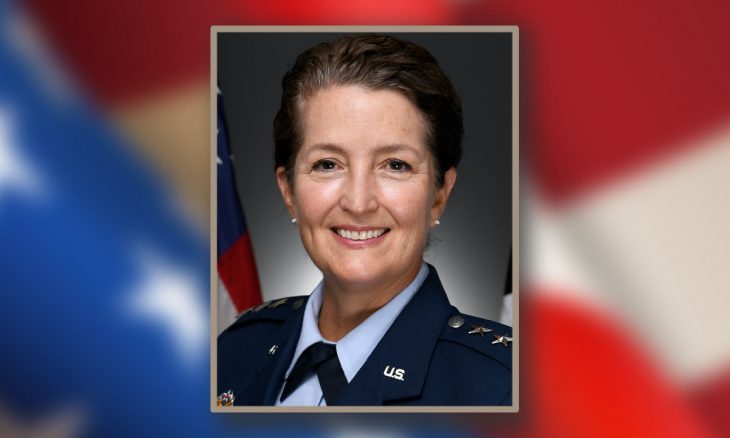Lieutenant General Nina Armagno
Director of Staff, U.S. Space Force
Nina Marion Armagno was born in March 1966 in Dundee, Illinois. She earned a B.S. from the United States Air Force Academy and later received a Master of Arts degree in Education Administration and Management from Chapman University in California. She completed numerous other courses afforded her by the military.
Within the Air Force, she had experience in space systems operations including as a combat mission-ready instructor, evaluator, and flight commander in strategic missile warning, space surveillance, space control, space launch, and theater missile warning mission areas. She was the operations officer at the First Space Launch Squadron, Cape Canaveral Air Force Station, Florida. She has served at a number of command levels and has held staff assignments at Air Force Headquarters and Space Command Headquarters.
In June 2017, Armagno was reassigned as director of plans and policy at the U.S. Strategic Command, and in July 2020 was transferred to the United States Space Force and promoted to lieutenant general. She is the first female general in the Space Force.
She is married to Eddie Papczun, a retired Air Force officer, whom she met when they were both captains.
In the News…
America’s military space catalog currently serves as the main source of data about the location of more than 27,000 satellites and space debris objects. However, chart information is still not enough to figure out what rival nations are doing in orbit, Lieutenant General Nina Armagno, Staff Director of the U.S. Space Force, said, speaking at the opening session of the American Institute of Aeronautics and Astronautics’ 2021 conference.
She said there is significant demand in the U.S. Space Force for intelligence about the space domain.
The United States’ current capabilities to track space objects date back to the 1960s when the North American Aerospace Defense Command (NORAD) started using satellites to monitor ballistic missile launches.
More than five decades later, “from a military perspective, there’s a need to understand more deeply the space domain, understand basically who is doing what to whom, and why,” the lieutenant general said.
“We need space domain awareness,” she added. “For years, the domain has been simply recognized as an exercise in cataloging the objects that we can see. And we’ve been using the space track catalog since the 1960s and 70s.” More sophisticated capabilities to monitor space activities are needed, not only for military and national security purposes, but also due to growing commercial satellite deployments, she said.
“For us in the military, this is important toward not only understanding the domain but also being able to capture space superiority when and where we need it in the future,” said Lieutenant General Armagno.









